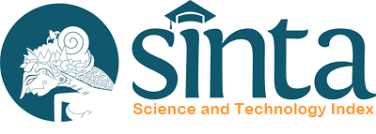Konservasi Kupu-kupu Papilio demoleus Linn. (Lepidoptera: Papilionidae) dengan Teknologi Makanan Buatan
DOI:
https://doi.org/10.24259/jhm.v12i1.9981Keywords:
pomelo, Papilio demoleus, artificial diet, butterfly, red beanAbstract
The purpose of the research is to study and increase of lime butterfly (Papilio demoleus L.) population used artificial diets, then avoid endangered species status of butterfly in nature. For the future, result of research giving more information about mass rearing techniques of P. demoleus butterflies using artificial diet. P. demoleus larvae and pupae were collected from pomelo (Citrus maxima L.) in the yard of communities in the Pattunuang Resort, Maros district, South Sulawesi. The pomelo leaves as the main food source of P. demoleus larvae taken from the farm around Bontomate'ne village, Pangkep district, South Sulawesi. The experimental activities were conducted in the Pest Laboratory, Pests and Plant Diseases Department, Faculty of Agriculture, Hasanuddin University from February to April 2019. The treatment for P. demoleus larvae were: P0 = fresh pomelo leaves (control); P1 = 35% red bean flour + 35% pomelo leaves + 30% vitamin, water agar, and other ingredients; P2 = 25% red bean flour + 25% soybean flour + 25% pomelo leaves + 25% vitamin, water agar, and other ingredients. Ten 2nd instar of P. demoleus larvae were placed in the plastic containers (diameter = 8 cm, height = 6 cm) covered with gauze, respectively. The fresh pomelo leaves given in whole form, while artificial diet in gel form given as much as 5 g for each larvae in the container. Every day the container was cleaned from food and larvae faeces. The experiments were arranged in Randomized Block Design with four treatments and ten replications. The result was showed P0 is the highest number increasing body weight of P. demoleus larvae. The second highest result increasing P. demoleus body weight was showed by P2 since 2nd instar (0.74 g) until four instar (0.87 g). Observation body length of P. demoleus, P0 was showed the highest number increasing the parameter. The second highest result of body length was showed at P2 started 2nd instar (0.24 cm) through four instar (1.72 cm). Findings at sex ratio and survival, P0 was showed the highest number adult of P. demoleus (8 individual), P2 (3 individual) and P1 (1 individual), respectively. The highest sex ratio of female P. demoleus resulted by P0 (3 individual), P2 (1 individual), respectively. The conclusion is : P2 made from red bean flour + soy bean flour + leaves of pomelo increasing body weight and length of P. demoleus larvae. P1 (red bean flour + leaves of pomelo) treatment was showed the lowest number in development of P. demoleus.
References
DAFTAR PUSTAKA
Astuti, D., 1992. Pakan buatan larva kupu-kupu Papilio demoleus. Puslitbang Biologi LIPI Cibinong Bogor, pp. 366-372.
Blanco, C. A., Portilla, M., Abel, C. A., Winters, H., Ford, R., and Street, D., 2009. Soybean flour and wheat germ proportions in artificial diet and their effect on the growth rates of the tobacco budworm, Heliothis virescens. Journal of Insect Science, 9 (59), 1-9.
CABI, 2019. Papilio demoleus (chequered swallowtail). Invasive Species Compendium. https://www.cabi.org/isc/datasheet/38758 (diakses tanggal 1 Mei 2020).
Dishut, 2003. Informasi Kawasan Konservasi : Potensi Kupu-kupu di Wilayah Kerja Balai KSDA Sulawesi Selatan. Departemen Kehutanan Dirjen Perlindungan Hutan dan Konservasi Alam BKSDA Sulawesi Selatan.
Genc, H., and Nation, J. L., 2004. An artificial diet for the butterfly Phyciodes phaon (Lepidoptera: Nymphalidae). Florida Entomologist, 87 (2), 194-198.
Glass, H. W., and Pan, M. L., 1982. Laboratory rearing of Monarch butterflies (Lepidoptera: Danaiidae) using an artificial diet. Annals of The Entomological Society of America, 76: 475-476.
Helmiyati, Dahelmi dan Diana, S. Y., 2010. Lama stadia pradewasa beberapa jenis kupu-kupu Papilionidae pada tanaman inang jeruk Bali (Citrus maxima Merr.). Jurnal Konservasi Hayati, 6 (2), 9-19.
Pandey, J. P., Tiwari, R. K., and Chaubey, A. K., 2011. Effect of repeated haemolymph withdrawls on haemocyte count in lemon butterfly, Papilio demoleus L. Indian J. Exp. Biol., 41: 1436-1445.
Pandey, S., Pandey, J.P., and Tiwari, R. K., 2012. Effect of some botanicals on hemocytes and molting of Papilio demoleus larvae. Journal of Entomology, 3 (1), 23-31.
Peggie, D., and Amir, M., 2006. Practical Guide to The Butterflies of Bogor Botanic Garden. Pusat Penelitian Biologi, LIPI Cibinong, Indonesia.
Peggie, D., 2011. Precious and Protected Indonesian Butterfly. Puslit Biologi LIPI and Nagao Natural Environment Foundation.
Rosdiana, 2019. Pengaruh pakan buatan kedelai (Glycine max L.) dan kacang merah (Phaseolus vulgaris L.) terhadap pertumbuhan larva dan produksi kokon ulat sutera (Bombyx mori L.). Jurnal Hutan dan Masyarakat, 11 (2): 79-91.
Sri, N. A. N., Saranga, A. P., Agus, N., Achmad, A., and Ridwan, I., 2014. Two artificial diet formulations for Troides helena Linne larvae (Lepidoptera: Papilionidae) in Bantimurung-Bulusaraung National Park, South Sulawesi. International Journal of Scientific and Technology Research, 3 (7), 170-173.
Taylor, O. R., Grula, J. W., and Hayes, J. I., 1981. Artificial diets and continuous rearing methods for sulphur butterflies Colias eurytheme and C. philodice (Pieridae). Journal of The Lepidopterist Society, 35 (4), 281-289.












